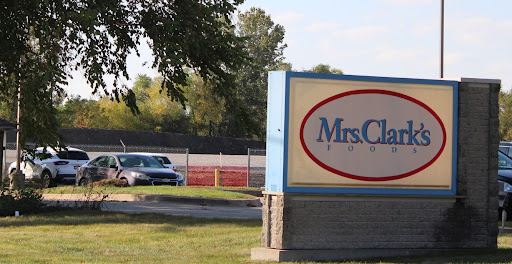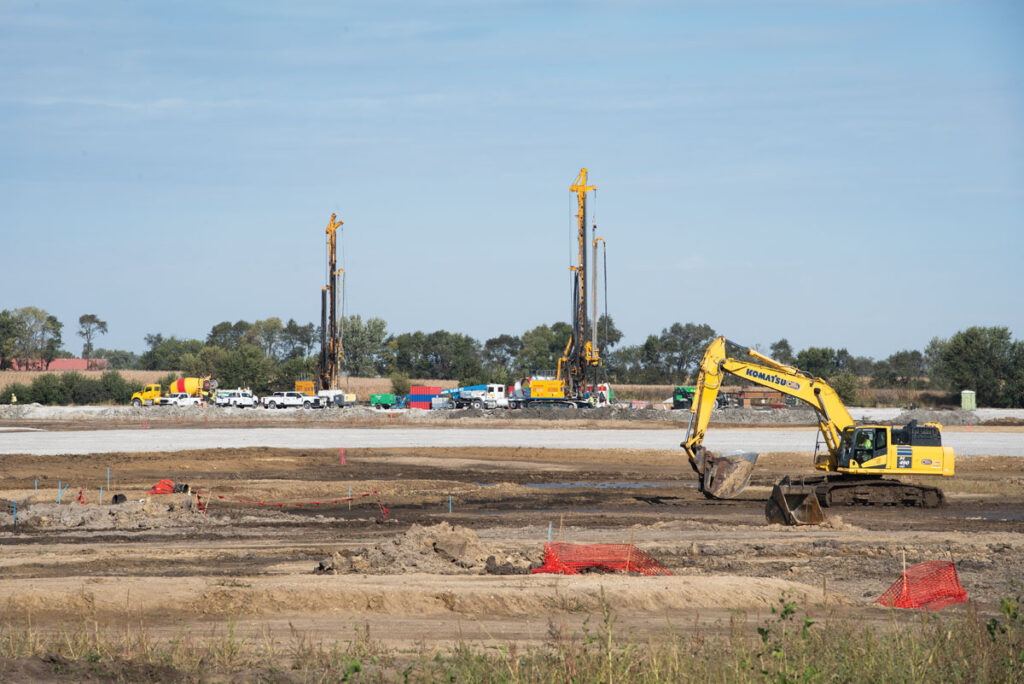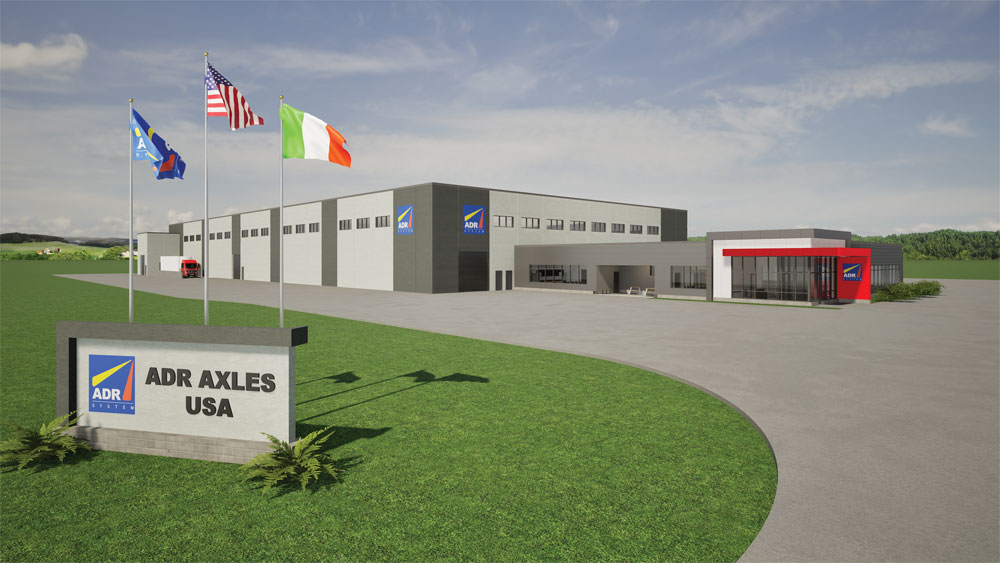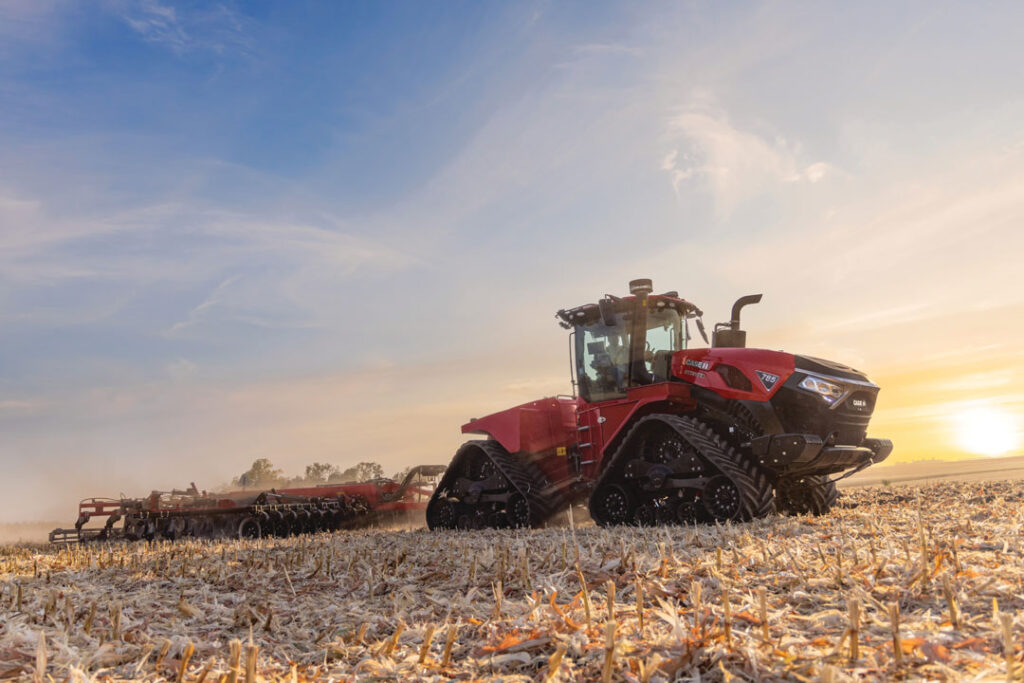Manufacturing Forecast: Key takeaways offered by industry insiders and analysts on the future of Iowa’s largest industry

As part of our annual look into Iowa’s manufacturing sector, Business Record Associate Editor Mike Mendenhall and Group Publisher Chris Conetzkey recently moderated a panel discussion with two Iowa-based manufacturers, an economics professor and patent attorney who are on the ground and closely watch the state’s largest industry.
During the 90-minute Manufacturing Forecast event, the panelists weighed in on skilled workforce recruitment and retention, recent ag manufacturing layoffs, interest rates and their impact on manufacturing productivity and investment, and the expanded role that artificial intelligence and automation is playing in the industry.

The panelists included:
Heather Bruce, president and CEO, Osmundson Mfg. Co.
Luke Mohrhauser, managing partner and chair of Mechanical and Electrical Practice Group, McKee Voorhees & Sease
Tom Root, associate professor of finance and department chair of accounting, economics, finance and law, Drake University
Lori Schaefer-Weaton, president, Agri-Industrial Plastics Co.
Here is what our reporters took away from the conversation.
Using automation to make jobs accessible to more workers
Schaefer-Weaton said retirement of the older generation will have an effect on productivity as they’re replaced by younger workers with less experience. “Part of automation is allowing us to increase our pipeline of who we can even get in to take these jobs,” she said. The advantage of Gen Z workers is they are open to and adept at working with technology and automation. “Automation AI, all those different things — doesn’t terrify them like it would boomers and potentially some of the Gen X workforce that you have, so pairing those two together is what we’re trying to see is more of a harmony,” Bruce said. Bruce also noted that she doesn’t think automation technology is currently as productive as a human. Mohrhauser said companies need to keep in mind that all automation is data-driven, so the quality of what you put in affects the outcomes. He said he counsels clients to get input from their experienced workers to tailor automations to their specific structure and processes as much as possible.
— Sarah Diehn, digital news editor
Iowa should turn ‘brain drain’ losses into boomerangs
A recent report from Iowa Workforce Development shows more college students educated in Iowa leave the state after graduation today compared with 20 years ago. Schaefer-Weaton said as a boomerang, that isn’t too concerning. “After college, I lived in Chicago for 15 years. I worked for a technology services company for 10 and came back and had a lot to offer a medium-sized manufacturing company in Fairfield, Iowa,” she said. “Had I just moved right back to my hometown, [I] probably would not have had as much to offer, so that concept doesn’t scare me so much.” But she said it does mean that employers and community leaders have to make the case for coming back to Iowa while they’re here. ABI’s Business Horizons program is one that successfully shows students the opportunities in Iowa, she said. Bruce is also a boomerang who came back to be near family. “I’m not worried like everybody is with the brain drain. I think it’s actually healthier for Iowans if we can let them explore, and then have them come back,” Bruce said.
— Sarah Diehn, digital news editor
The immediate and long-term effects for manufacturers if the Federal Reserve lowers interest rates
At the time of the Manufacturing Forecast, the Federal Reserve had not yet made its decision to lower the U.S. benchmark interest rate by 0.50 percentage points. The decision to lower rates had been predicted after inflation reached 2.5% in August, nearing the Fed’s 2% target. Root said for the farm economy, it’s important to watch if a lower rate translates into lower costs associated with big, long-term capital investments in large agricultural equipment. “If that starts to bring that down and changes that market, that helps [John] Deere and the big players and helps smaller players. But that also is a really interesting sign about recession versus expansion for the broad economy going forward, which impacts all manufacturers. And I think the big discussion lately has been, is this a sign of trying to stave off a recession and a slowdown in the broader economy, which can impact everybody? And will that work?” Root said. The high interest rates have caused production in ag manufacturing to slow, he said. That economic uncertainty is the big question for the next 12 to 18 months, according to Root. It’s unclear if action on rate cuts have come too slowly to avoid a broader economic slowdown.
Bruce and Schaefer-Weaton said if there is a recession, it won’t prevent their companies from making capital investments in the next one to two years. “It’s what we’ve always done. We want to be able to take advantage of the opportunities at the end of it,” Schaefer-Weaton said. “And so that definitely doesn’t dictate our [capital expenditures] spending or how we’re spending our dollars. But for me, I make parts that go on things like ATVs and WaveRunners, and lawn and garden. And so for those industries, I think, who’s really feeling it is the consumer.” For the Agri-Industrial Plastics president, uncertainty about the tax code and including new rules on depreciation is a bigger concern. “That is an instantaneous, in-the-same-year hit, and honestly, at this stage in the game, there are huge question marks. Things that were supposed to have been fixed by year end were not,” she said.
— Mike Mendenhall, associate editor
How recent layoffs in ag manufacturing are affecting productivity and the economy more broadly
Root said those layoffs have a “spillover effect, especially when you think about small towns that have a large plant that gets hit or a provider into a larger system and the ecosystem.” But he said there is growth in other manufacturing sectors outside of agriculture, where those layoffs could present an opportunity. “Those who get laid off have skills. And the question is, can you take advantage of those skills to bring them into a manufacturing facility in a different place?” Root said. “And so it might actually help in some manufacturing areas here that we have some highly skilled people who maybe work very well on the manufacturing floor, and who can then transfer out of ag into something else.” According to Root, the state’s manufacturing industry produces about 14% of the ag implements sold nationwide, making it a big part of Iowa total manufacturing base.
Because Osmundson services component orders for original equipment manufacturers and the aftermarket, the ag manufacturing layoffs have a direct hit on the company, Bruce said. “Everybody was buying heavy during the last four years, and then this major kickoff of John Deere and the uncertainty with Deere, because they hold the dealer network. Let’s be honest, everybody plays with the big green machines. It takes a toll on us. … We still feel it. Orders are super slow. We probably have the order books very similar to 2018 where we had almost double our growth from 2019 over the last four years. It is also one of those things that is a double whammy for us, because our town is very heavily in agriculture, one form or another. Tyson’s closure was a huge hit to the industry. And then we have a few others that are also like, ‘Hey, we’re gonna have to do layoffs because there’s not enough volume in the industry itself,’” she said. Osmundson is trying to be “very creative” to keep its workers employed during the slower period because it took time to bring the talent on board.
“We know in the ag economy, we’re the last ones to get hit. So the fact that we’re being hit now, when everybody kind of started seeing it pre-COVID or right around COVID, that means that, yep, we’re going to work towards the end, so to speak. So when ag has that two- or three-year lull, that’s really the lull of the economy, and then we’ll start picking back up again,” Bruce said.
— Mike Mendenhall, associate editor
Optimism for production orders to start stabilizing in 2025
Schaefer-Weaton is cautiously optimistic about production orders for 2025. “We still have some big customers that are forecasting yet another year over year to be down, and so that will be a big chunk for us,” she said. “Diversification is key.” Schaefer-Weaton said, though, that when those segments have been down, the traditional ma-and-pa shops have been up. “This year, our team was hunkered down, and let’s get through this year,” she said. “I’m looking at 2025 in kind of the same context right now.” Coming out of the COVID-19 pandemic, Schaefer-Weaton said customers took so much product that they couldn’t check it in on their end because they didn’t have a warehouse where they could store it. “We would like to think that it’s going to go back to that pre-COVID era when it comes to the number of units per part. But I would say for several of our big [original equipment manufacturers] this year, it was down from that level. And I would say that next year may be similar, maybe a little better.”
— Kyle Heim, staff writer
Some manufacturers going ‘back to basics’ by attracting middle school, high school students
Bruce said it’s important for manufacturers to go to middle schools and high schools to teach students what it means to work in a manufacturing facility. “It’s not the, ‘Oh, my goodness, that’s a terrible job’ type of thing,” she said. “It leans into STEM, but it’s more than that. It’s definitely getting them understanding the environment.” Bruce said Osmundson is working with high schools but trying to get more involved with junior highs and trade schools because she believes high school is almost too late to get started. “Shadowing, showing them, telling them, getting the kids and the nephews and nieces excited about the industry is just part of the battle because we don’t have the farm kids, we don’t have the kids who are like, ‘Yep, cool, I’m fixing and doing things with my hands constantly.’”
— Kyle Heim, staff writer









